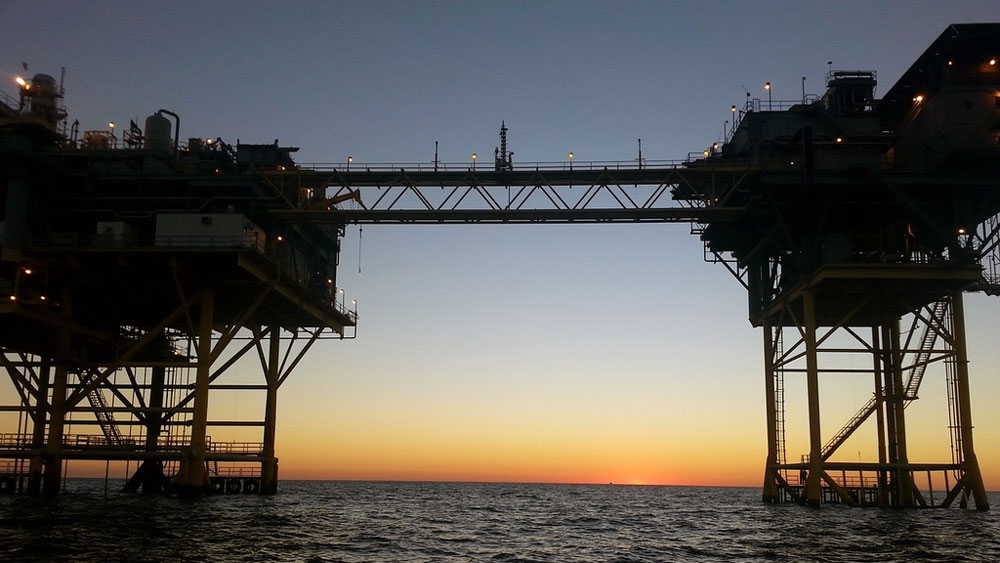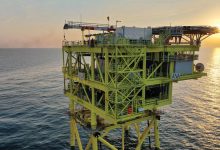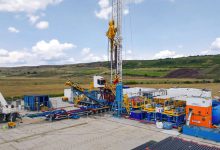How to Turn the Black Sea into an Economic Driver After the Crisis
The global energy sector is hit hard by the corona-crisis. The sharp decrease in the oil and gas demand, which overlapped the price war triggered by Saudi Arabia after Russia’s refusal to reduce its oil production, endangers the major energy projects of the world, as well as the future, at least in the medium term, of transition towards decarbonization established under the new policy of the European Union, known as the Green Deal. Caught in this equation with several unknown elements, Romania must support the energy system, which may be key to restarting the economy in the following period, especially due to offshore projects in the Black Sea. But for this the state is now called to unlock the projects by establishing an investment framework ensuring, in the term, the stability and competitiveness of the fiscal and regulatory regime.
Attending a conference call, organized by Sustainable Romania and EM 360, Niculae Havrilet, Secretary of State in the Ministry of Economy, Energy and Business Environment (MEEMA), said the current prices on the gas market discourage investments. Quotations on the wholesale gas market, which are now similar to the import ones, are back to the level of 2008, when they stood at USD 110/TCM. In 2012, when the major Black Sea gas extraction projects were launched, the price was USD 450/TCM.
“A price of USD 360/TCM was feasible at the time for starting the projects. Amid the decrease in prices and their unpredictability, the reduction of demand and the apparition of new routes for supplying gas to Europe, the risks related to investments have become very high,” Niculae Havrilet said. He mentioned that, despite these major imbalances that disrupt the activity of energy markets, the US company ExxonMobil has not stopped the activity in the Black Sea, where together with OMV Petrom it carries out the Neptun Deep project, but has not made yet the final investment decision, mentioning that it was related to the amendment of the Offshore Law.
Top priority: Amending the Offshore Law
In the opinion of the representatives of the Oil and Gas Employers’ Federation (FPPG), amending the Offshore Law (Law No. 256/2018), to bring it in line with investors’ requirements, is absolutely necessary.
“Changing the provisions of the Offshore Law to ensure stability and competitiveness of the fiscal and regulatory regime, of the Energy Law, as well as a liberalized gas market are things expected by investors,” said in turn Adrian Badea, Vice-President of FPPG. This measure would generate investments of several billion euros in the first years alone, before the actual extraction of the first gas molecules. Moreover, Black Sea gas could be the basis for developing related industries which, in turn, would generate considerable economic benefits, he also said. The importance of the oil sector in restarting the engines of the economy in the post-crisis period remains vital, even if now the sector is strongly hit, emphasized in turn Daniel Apostol, director within the Sustainable Romania project. “The analysis on the new post-crisis economy must start from the assumption that a lot will change and at the question how to restart the economy we need to start from oil,” he pointed out.
Amendment of the Offshore Law, a benefit for all
In the opinion of Deloitte consultant Razvan Nicolescu, Romania has two major opportunities in the following period: decarbonization and tapping the potential of mineral resources. “It is up to us how we capitalize on these opportunities. There is an idea created in our case that if the Offshore Law is amended only the companies benefit, not the state. The fact is that if it is not amended, we all lose, including the consumers,” he said.
Despite the advantages that starting Black Sea projects would bring, amending the Offshore Law will take time, in the opinion of Secretary of State Niculae Havrilet, the amendment following to take place after the parliamentary elections.
The first project financed through the 10.d Facility
Besides the Iernut gas-fired power plant, under construction, Romgaz is preparing the construction of a new gas-fired power plant of 450 MW in Iernut. For it there is already a feasibility study and the execution contract could be signed by the end of the year. The project has all chances to be the first of the 140 submitted by Romania financed through the 10.d Facility – the EU Modernization Fund, Niculae Havrilet announced.
For Romgaz, increasing the power generation capacities, so that it is no longer dependent on gas prices, is the priority in the following period in terms of business development, said Mihaela Toader, specialist in European funds at Romgaz.
Another project that could quickly receive funds through the 10.d Facility is that regarding the restructuring of Complexul Energetic Oltenia. Here the plan is to obtain a restructuring aid worth EUR 241mln to purchase emission allowances, but subject to submitting a restructuring plan within six months. It would include the switch to gas of several energy groups that are currently coal-fired and building several photovoltaic parks with a total capacity of 300 MW. For Romania natural gas can now become a major asset, after before the crisis many of the projects that used this resource could not be financed.
“The EU is facing two trends: continuing the Green Deal project and the natural trend of slowing down the project due to fewer funds amid the current crisis. Now the gas price is a challenge because a low price makes projects unprofitable. The state will now have to play an important role, as it can tilt the balance,” said in turn Corneliu Bodea, President of the Romanian Energy Centre (REC).
Financing the increase in energy efficiency
In the opinion of Radu Dudau, the President of think tank Energy Policy Group (EPG), another opportunity to restart the national economy after the corona-crisis is represented by projects intended to increase energy efficiency, with a focus on the energy efficiency of buildings. According to him, at MEEMA level there is a project under discussion to create a national fund intended to finance these projects.
According to a recent study conducted by EPG, most of the 5.1 million residential buildings of Romania were built before 1990, at a low level of energy efficiency standards, with energy performance of 180-400 kWh/sqm/year. Also, 2.4 million apartments built before 1985 need technical renovation and modernization. One in seven residential buildings has damaged interiors, often with consequences on the health and welfare of inhabitants. The Ministry of Environment in February 2020 announced a new building renovation program, allocating EUR 90 million for individual houses and EUR 80 million for public buildings.
Although the allocated funds are significant, they remain insufficient, in conditions in which the new nZEB standards (Nearly Zero-Energy Buildings), imposed by the Energy Performance of Buildings Directive, lead to a significant increase in costs. From this perspective, new funding sources are needed, including, besides the European funds, state guarantees, low-interest loans and subsidies based on the measurable gains of energy efficiency, public funding for renovation of buildings in the communities affected by energy poverty, EPG analysis also shows.
Liberalization of energy prices brought forward
Government is analysing the possibility to bring forward by half a year, compared to the provisions of the legislation in force, the liberalization of electricity prices for population. Re-liberalization of electricity prices, after the cancellation of the provisions regarding price capping under the famous GEO No. 114/2018, is provided for January 1, 2021. Regarding gas prices, Government wants to observe the current schedule, which provides for liberalization on the same date, July 1.
“We would like to also liberalize the electricity market as of July 1 and have lower prices for end-consumers. We are discussing this possibility, because ANRE can no longer establish administered prices for producers. On both markets, for electricity and natural gas, the upstream, wholesale markets have a low level and this puts a downward pressure at the end-consumer,” Niculae Havrilet mentioned.







